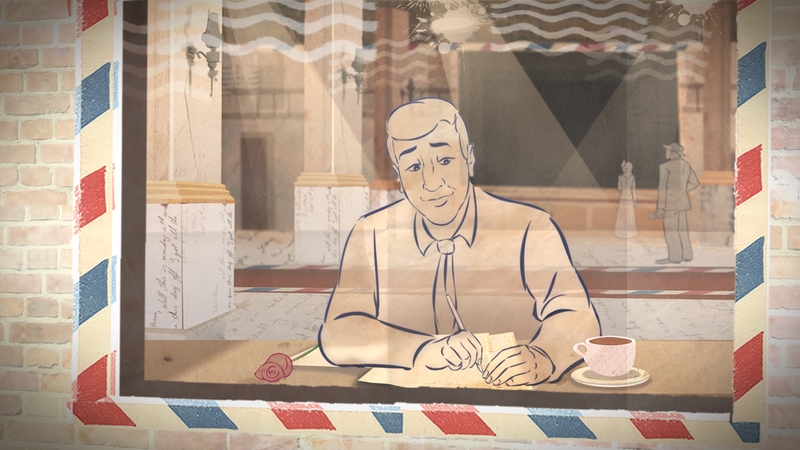Andrew Kavanagh is the director of City of Roses, the only short film in competition at Irish Film Festa 2016 to combine animation and live action tecniques.
City of Roses tells the real story of Paddy Fitzpatrick, emigrated from Dublin to Oregon in the early 1950s, through the letters he wrote home to his mother telling all about his new life in America, his new job, and his new love: Rose.
Kavanagh’s short film features the work of graphic designer Annie Atkins, who recently created props and set pieces for Laika’s stop-motion film The Boxtrolls, Wes Anderson’s The Grand Budapest Hotel, Steven Spielberg’s Bridge of Spies, and tv series Penny Dreadful.
Why did you choose to tell the story of Paddy Fitzpatrick combining live action and animation?
The original idea was to do an animated film based on the letters, but I spent so long telling the story that my own involvement in events became a separate narrative, particularly after I managed to make contact with the family. The easiest way to stylistically contrast the two narratives was to do one in live action and one in animation. It also helped to have the artefacts of the letters themselves as the portal in which the audience is brought into the animated timeline. The letters are the bridging point for the two narratives and feature as the link point in overall the art direction, so it reinforces their vital importance and the fact that they were almost lost.
Can you tell us something about the animation technique, especially regarding the composition of the backgrounds? And what about the contribution of graphic designer Annie Atkins?
The letters are the basis for the overall artistic direction of the animation. All the textures are notepaper, the characters were modelled on ink signatures passing across the page and the backgrounds feature post marks, stamps and even windows are modelled on cellophane windows in envelopes. We tried to use as much ephemera from the original letters as possible, particularly in the key scenes at the hospital and cemetery, but the text of the letters is used in practically every scene, often in a very subtle way. I had returned the original letters to Rose before we started the film, so I needed to make several key props for the live action scenes based on scans.
Annie Atkins’s involvement was pure serendipity: our location for the key scenes was at a neighbour’s house – he happens to be a hairdresser. He had been styling Annie’s hair and they got talking about the film. She expressed an interest in the story and we got in touch. I couldn’t believe it, she was a dream choice for this role. She remade the letters down to the smallest detail, even hand making the stamps for each individual envelope.
Music plays a big part in the film: how did you work with the composer David Harmax?
I had been contacted by Greg Magee who had done the scores for several of my films: he was working closely with David, who was on a Masters program at the time. He really felt David had the orchestral style needed to interpret the score. All the music is based on Thomas Moore’s “Believe Me, If All Those Endearing Young Charms“, a song mentioned in one of Rose’s letters as Paddy’s favourite, and one which made him very homesick. As I had so little biographical detail on Paddy at the start of the film, this tune became anthemic for me. It’s a sentimental song about love and it really represents Paddy and Rose’s story very effectively. I needed someone who could arrange it in many different ways and create something entirely new. So I was very fortunate in getting David on board, he recorded the score with live musicians and mixed it separately. There are only about eight musicians but he made it sound so much larger.

